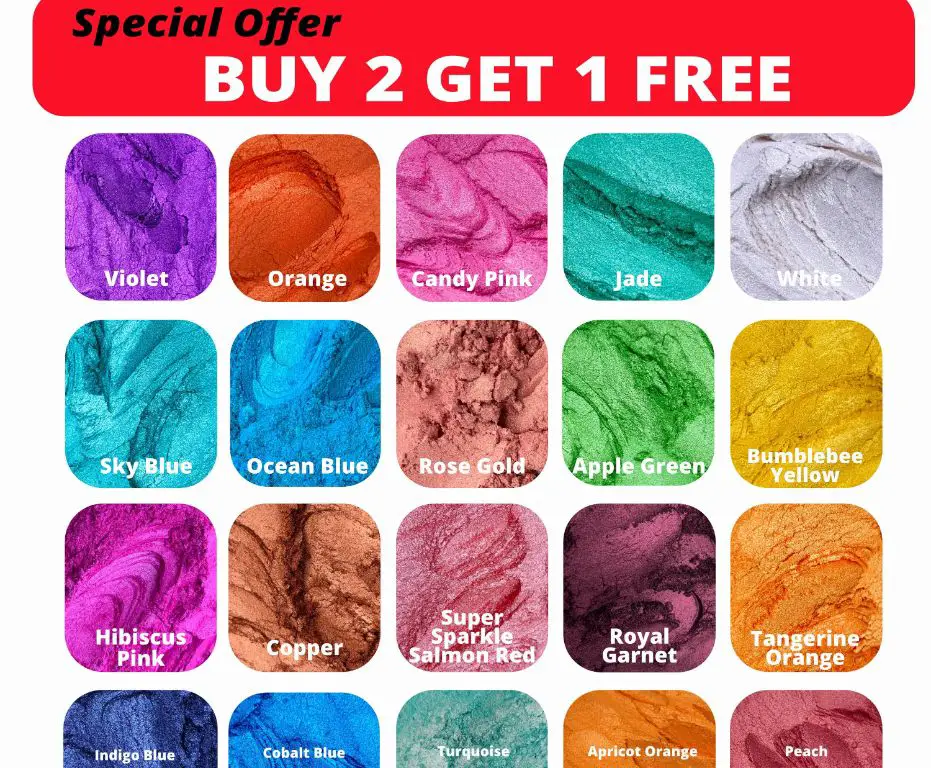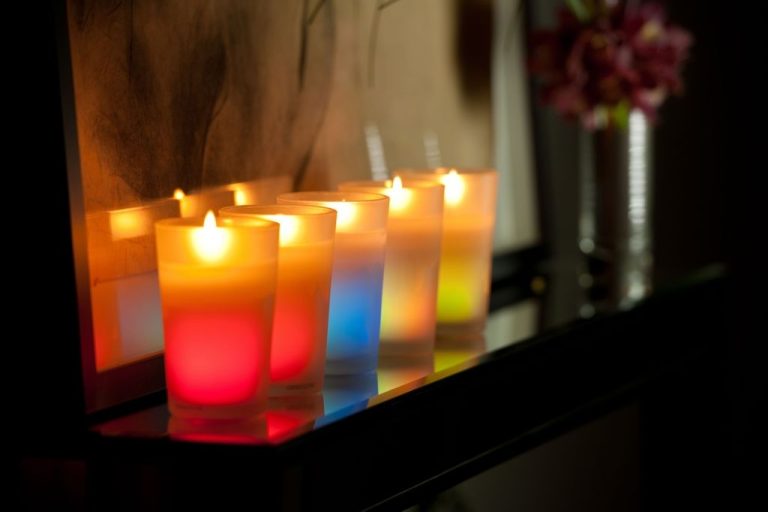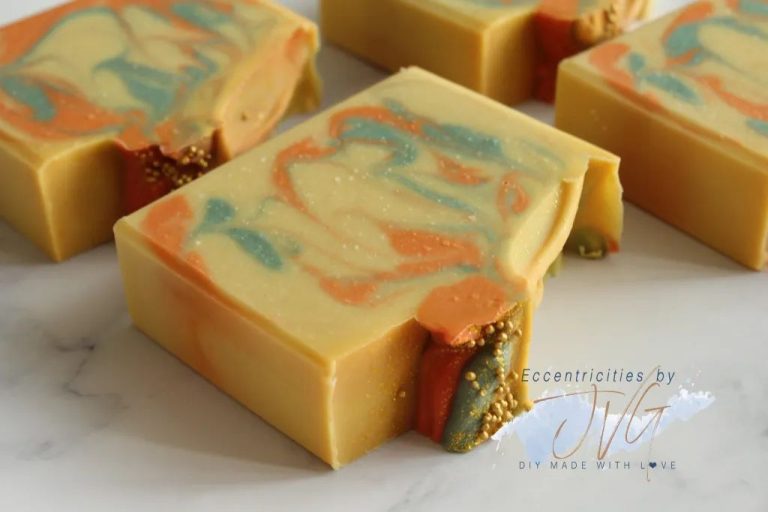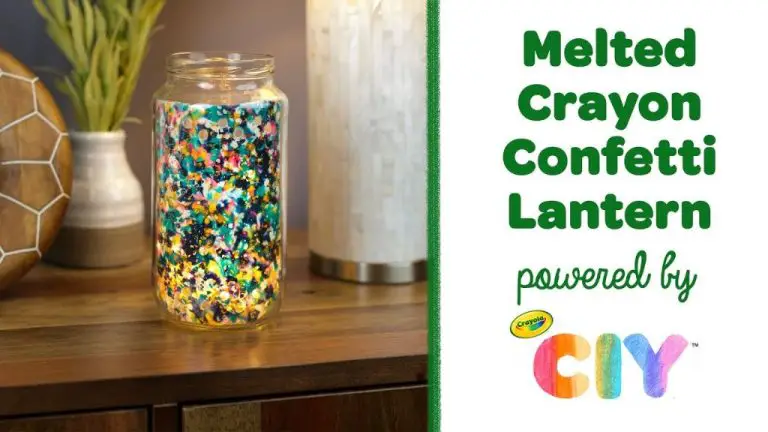Can Mica Powder Be Used In Candles?
What is Mica Powder?
Mica is a naturally occurring mineral that has a sheet-like structure. It is mined from the earth’s crust and occurs in various types including muscovite, biotite, phlogopite, lepidolite, and fuchsite. The sheets in mica’s structure cause it to split into thin flakes or scales. These flakes reflect light and give mica a shimmery, pearlescent sheen. Mica’s unique properties make it useful for various applications.
There are two main types of mica powder: natural and synthetic. Natural mica is mined and then ground into a fine powder. Synthetic mica is chemically produced to simulate natural mica. Both types of mica powder are used in products like makeup, paints, plastics and roofing materials. They provide effects like opacity, shimmer, brightness and color.
Properties of Mica Powder
Mica is known for its reflective, shimmery appearance. It is a mineral that cleaves into thin, elastic sheets. The sheets can be so thin that light can shine through them, creating a pearlescent effect. This gives mica powders their signature sparkly look.
Some key properties of mica powder include:
- Refractive index of 1.54-1.61, causing light to reflect off the thin sheets and produce a shimmer (1)
- Mohs hardness of 2.5, making it a soft mineral that can be ground into a fine powder
- Chemical formula of KAl2(AlSi3O10)(F,OH)2, composed of sheet silicate minerals (2)
- Varieties include muscovite, biotite, phlogopite, and lepidolite which can produce powders in different colors
- Heat resistance up to 900°C before losing its shimmery appearance
- Chemically inert and stable when exposed to light, moisture, and electricity (3)

These properties allow mica powder to add a luminous, shimmery effect to materials like candles, cosmetics, paints, and plastics when ground into a fine powder.
(1) https://www.tedpella.com/vacuum_html/Mica_Grade_V1_Properties.aspx
(2) https://en.wikipedia.org/wiki/Mica
(3) https://www.firemountaingems.com/resources/encyclobeadia/gem-notes/hc0l
Uses of Mica Powder
Mica powder has a wide variety of uses across many industries. Some of the most common uses are in cosmetics, paints, and plastics.
In cosmetics, mica powder is used to add shimmer and pearlescence to products like eyeshadow, blush, and lip gloss. The tiny flakes of mica reflect light to create a luminous, multidimensional effect on the skin. Mica is used in loose and pressed powder makeup products as well as cream formulas like liquid highlighters and luminizers. It is a common ingredient in mineral makeup lines. According to Slice of the Moon, mica powder is one of the most versatile colorants and visual enhancers for cosmetics1.
In paints, mica powder is mixed in to create unique visual effects. It adds pearlescence and sparkle to paints. Mica powder can create a textured look or frosted finish when mixed into acrylic, oil, or watercolor paints. Painters may also use mica powder with mediums like resin or varnishes. According to Meyspring Pigments, mica powder adds visual depth and dimension to paints2.
Mica powder is also commonly used as filler in plastics and fiberglass. It enhances mechanical properties like impact strength, tensile strength, and flexural strength. Mica provides reinforcement and acts as a nucleating agent in plastics. It improves thermal stability and heat deflection in products made from polymers like polyethylene and polypropylene.
Mica Powder in Candles
Mica powder is commonly used in candle making to provide shimmer, sparkle, and a metallic sheen to candles. When added to candle wax, mica powder reflects light and creates an eye-catching glittery effect. The fine, shimmery particles of mica mix into the wax and remain suspended when the candle is burning. This allows the flickering candle flame to illuminate the mica particles, creating a luminous, sparkly effect.
Mica powder is available in a wide range of interference and pearlescent colors, making it easy to achieve beautiful custom candle colors and finishes. It’s an easy way to transform ordinary candles into something special. From a light dusting to heavy application, mica powder can create anything from a subtle shimmer to a bold glimmering finish. This versatility makes mica an appealing additive for candle makers looking to enhance their products.
According to Suffolk Candles, “Mica is one of the best ways to add some glitz and glamour to your candles. A little goes a long way so use it sparingly until you get the effect you want.”1 When used properly, mica powder creates stunning effects in candles without compromising safety or performance.
How to Add Mica Powder to Candles
Adding mica powder to candles is a simple process. Here are the basic steps:
First, melt your candle wax completely until it is in a liquid state. You can use a double boiler or microwave to melt the wax.
Next, prepare the mica powder. Measure out the amount you want to add using a small spoon or scale. The general recommendation is to use 1/8 to 1/4 teaspoon of mica powder per pound of candle wax [1].
Once the wax is fully liquefied, stir in the mica powder. Mix thoroughly to distribute the mica powder evenly throughout the wax. Continue stirring for 2-3 minutes.
If adding multiple colors, add one color at a time, fully mixing between each addition. This helps prevent the colors from blending together.
After mixing in the mica powder, pour the colored wax into containers or molds as usual and allow to fully harden before burning.
When adding mica powder, always do a small test batch first to ensure you achieve the desired color saturation before making large batches.
Choosing Mica Powder for Candles
When choosing mica powder for candle making, two key factors to consider are particle size and color options.
Mica powder comes in a range of particle sizes from extra fine to coarse. Finer mica powder blends more smoothly into candle wax while coarser particles create more speckled effects. According to candle making experts on Reddit, a fine particle size around 10-60 microns works best for a smooth, even color distribution in candles.[1]
Mica powders are available in a huge variety of colors from bold brights to muted earth tones. Popular shades for candles include gold, silver, copper, rose gold, and holographic. When choosing colors, take into account the candle fragrance and overall aesthetic you want to achieve. Neutral metallic colors like bronze tend to complement most scents while bolder hues can occasionally overpower some fragile floral fragrances.
High quality mica powder designed specifically for candle making, like those found on Amazon, will provide the best results.[2] These are finely milled and formulated to mix smoothly into wax with superior color payoff.
Safety Considerations
When using mica powder in candles, it’s important to be aware of safety precautions. Mica powder can be inhaled when working with it in powder form, and some types of mica may irritate lungs if inhaled in large quantities over time. It’s recommended to wear a dust mask when measuring and mixing mica powder. Some people may also develop skin irritation from contact with mica powder. Wearing gloves when handling mica powder is advised to prevent skin exposure.
According to the SDS safety sheet from CandleScience, mica powder is not classified as a health hazard, but may cause “mechanical irritation” to the skin, eyes, nose and throat. They recommend avoiding inhalation of dust and preventing contact with eyes.
When burning candles containing mica powder, inhalation of mica dust is not a concern as the mica becomes trapped in the melted wax. However, some types of mica may release small amounts of aluminum oxide when burned, so ventilation when burning mica candles is recommended.
Pros of Using Mica Powder in Candles
One of the biggest pros of using mica powder in candles is the aesthetic appeal it provides. Mica powder comes in a wide variety of shimmery, pearlescent colors that can create a visually stunning effect in candles. The shimmery flecks reflect and refract light, providing a magical sparkling appearance. This allows candle makers to create unique and eye-catching designs (Source 1).
Adding mica powder also allows for immense customization and personalization of candle designs. It can be mixed into the wax before pouring or sprinkled on top of poured candles. The color possibilities are endless. Candle makers can carefully coordinate mica powder colors to match their brand, promote causes, reflect seasons or holidays, or align with personal tastes. This creative freedom is a major pro for artisanal candle makers (Source 2).
Cons of Using Mica Powder in Candles
While mica powder can add some beautiful shimmer and color to candles, there are some potential downsides to be aware of:
Cost – Mica powder can be more expensive than regular candle dyes. The cost goes up significantly for very fine, high quality micas.
Messiness – Mica powder can create a big mess during the candle making process as the fine particles get everywhere. Proper protective equipment like masks and gloves are recommended when working with mica.
Inhalation risks – Breathing in mica dust over time can cause lung irritation for some people. Always work in a well-ventilated area and use a respirator mask if needed [1].
Some recommend avoiding mica powder in candle wax and using it only for decoration on the outside of the container. The glittery powder can clog wicks and create an uneven burn if used in the wax itself.
The Bottom Line
Overall, mica powder can be a great addition to candles when used properly. Here are some key takeaways:
- Mica powder adds a beautiful shimmery appearance and helps candles stand out.
- Use cosmetic-grade mica powder to ensure safety and avoid health risks.
- Add mica powder at 1-2% of wax weight for best results. Too much can clog wicks.
- Mix mica powder when wax is melted prior to pouring candles.
- Pair mica powder with soy, paraffin, or palm waxes for optimal effects.
- Consider mica powder’s impact on burn time and wax pooling.
- Take safety precautions like wearing a mask to avoid inhaling fine mica dust particles.
With some trial and error, mica powder can create stunning candle designs. Just be sure to test for ideal usage and take steps to minimize health hazards.






